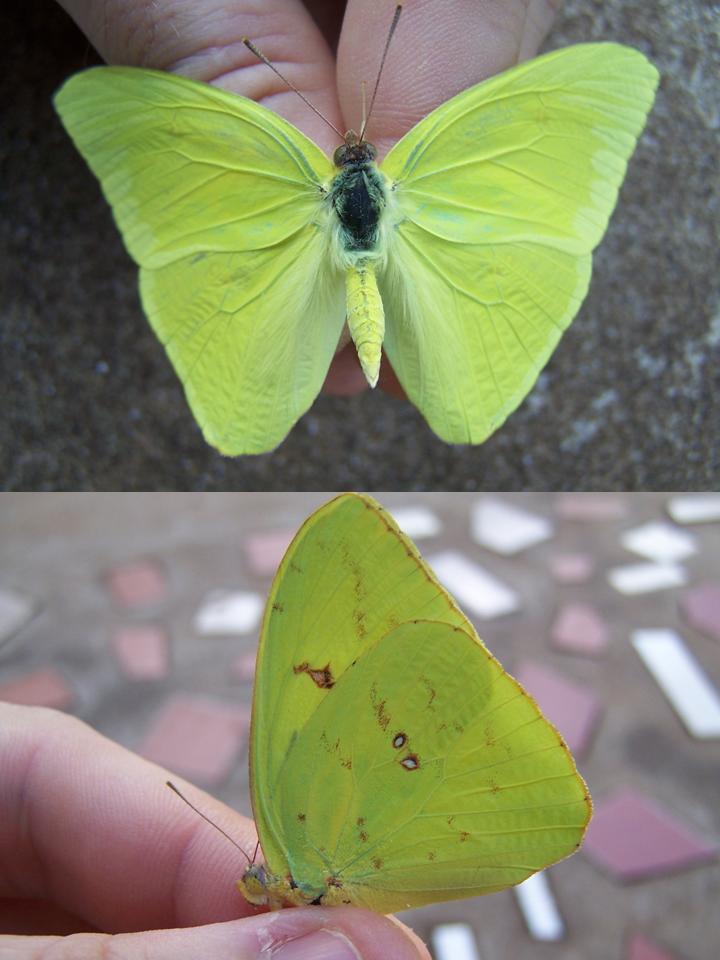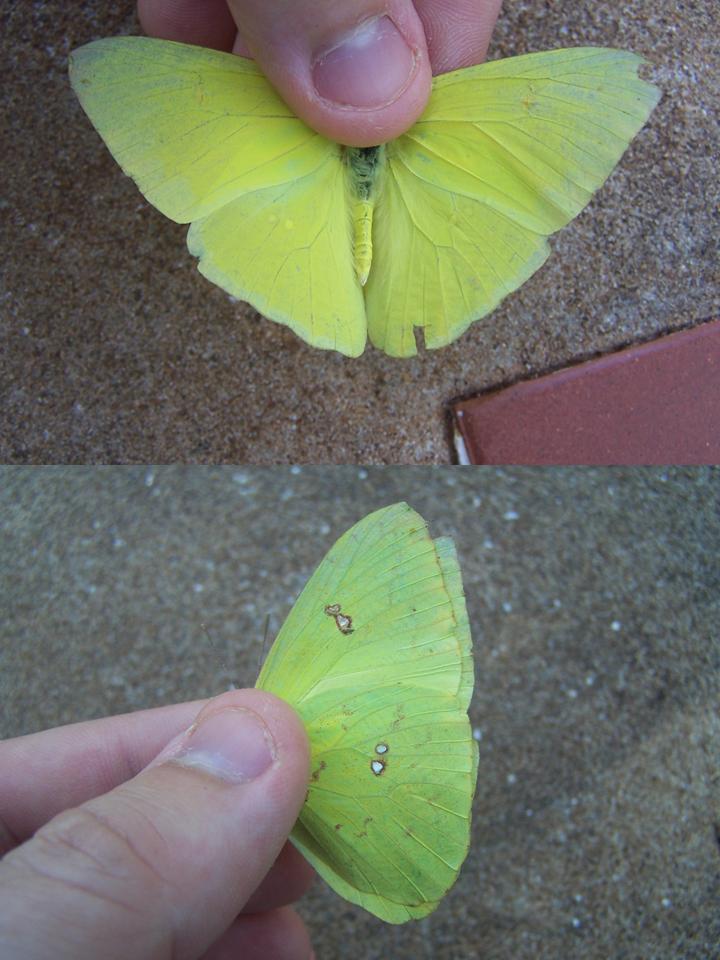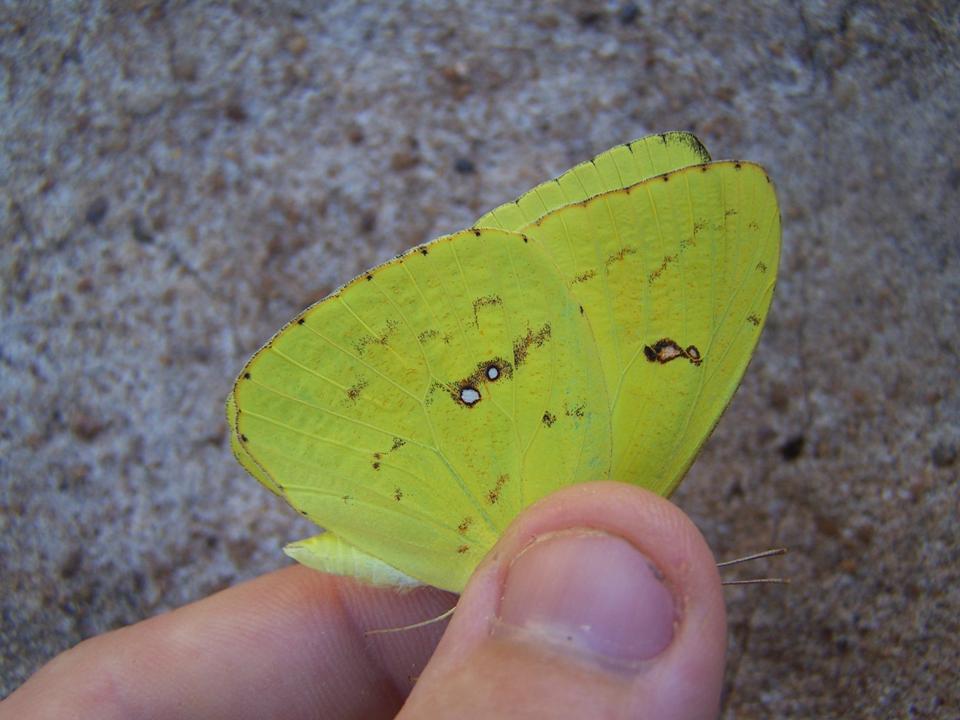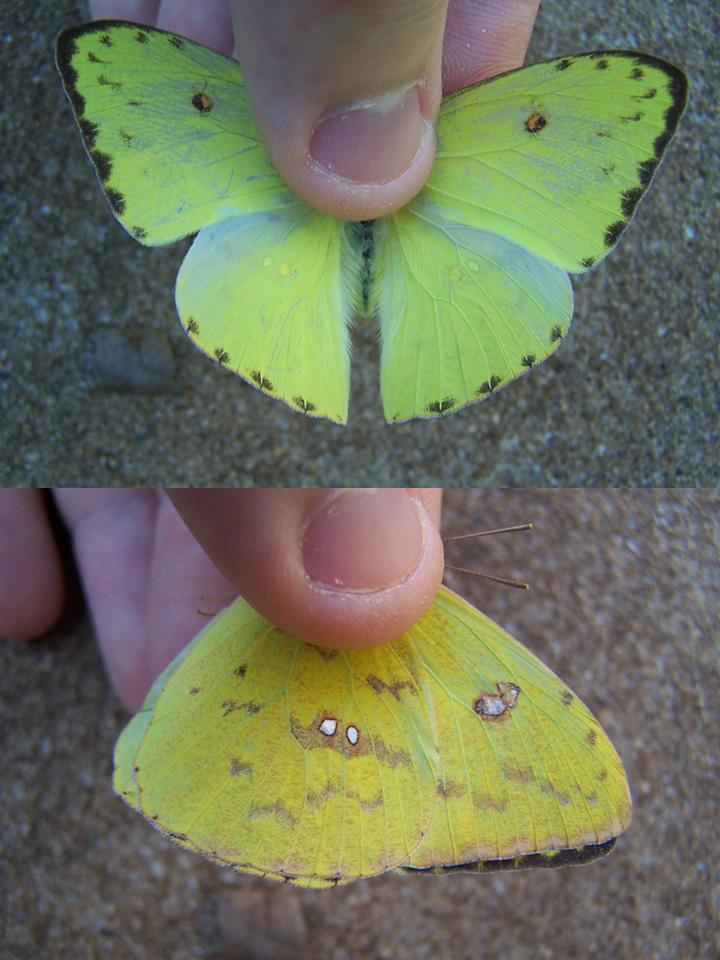

Designed by Paul Smith 2006. This website is copyrighted by law. Material contained herewith may not be used without the prior written permission of FAUNA Paraguay. Photographs on this web-site were taken by Paul Smith, Hemme Batjes, Regis Nossent,
Alberto Esquivel, Arne Lesterhuis, José Luis Cartes, Rebecca Zarza and Hugo del Castillo and are used with their permission.
Phoebis sennae marcellina (Cramer 1777)
ENG: Cloudless Sulphur
ESP: Febo
JIZ: Forewings square, slightly pointed at apices and with smoothly rounded costa. Hindwing triangular with straight outer edge and diagonal anal margin. Folded wing with straight outer margin abruptly rounded at anal edge and right-angled apex of forewing. Sexually dimorphic. Poses with folded wings. FLI: Fluttery but strong and straight.
UPP: M (Fig 1-3) Uniformly lemon-yellow, slightly paler towards outer and anal margins (broadest on anal margin of hindwing and thinnest on outer margin of hindwing). F (Fig 4) Lemon-yellow with brownish medial spot on forewing. Black margins of forewing thickened at apex, and with a wavy, undulating edge along outer margin forming a series of large "half-spots". Line of three small subcostal spots close to the apex, and vague, smaller submarginal spots dispersed parallel to outer margin. Hindwing lemon-yellow with four or five black dashes along outer margin.
UND: Relatively unmarked compared to other Sulphurs, hence the "Cloudless". M (Fig 1-3) Lemon-yellow (Fig 1&3) or greenish-yellow (Fig 2) with thin rust pencil-line along outer margins of both wings. Two small white spots of equal size bordered rust on medial hindwing. Large rust-coloured smudge on medial forewing (Fig 1) or small white spot bordered rust (Fig 2-3). Both wings with very sparse rust-coloured scribbles and spots scattered across surface forming a vague, wide, broken circular pattern around hindwing median spots and an indistinct diagonal streak across postmedian forewing. F (Fig 4) Lemon-yellow and with clearly defined pairs of white spots bordered rust on both hindwing and forewing. Underwing relatively unmarked but with a few bold, clear brownish scribbles and row of three small, brownish subcostal spots close to the apex equivalent to those on the upperwing. Outer margin pale brown.
BOD: Upperside of head grey-brown. Underside of head and body pale yellow, with labial palps and thorax brighter. Upperside of abdomen lemon-yellow, often with vague thin black medial line along basal two-thirds. Upperside of thorax black with sparse yellow-white hairs. Legs pale yellow. Antennae brown with very slight pale tip to clubs. Eyes bicoloured, grey-brown above and yellow below. Proboscis black or pale brown with paler underside.
MMT: A medium-small Sulphur. No significant sexual difference in measurements. CL - 32.2mm (31-33mm); BL - 23.2mm (21-25.5mm); AB - 14mm; WS - 64.8mm (62-67mm); HW - 3.5mm; AL - 12.7mm (12-13mm); n=3 (2M 1F).
SSP: A noticeably pale lemon-yellow Sulphur. In both sexes the underwing appears relatively unmarked compared to Phoebis argante which is otherwise clearly more mustard-coloured. Uniform lemon-yellow upperwing pattern of male similar to Rhabodryas trite but readily distinguished by underwing pattern (both species habitually perch with folded wings), that of Rhabdodryas showing the diagnostic “straight line” across both wings that gives the species its common name and no spotting. Note also the quite different hindwing shape, almost triangular in sennae, rounded in Rhabdodryas. Females are most likely to cause identification problems, being somewhat intermediate in patternation between the strongly-marked females of Phoebis argante and less boldly-patterned Aphrissa statira. Generally with less extensive dark markings both above and below than P.argante and with paired white spots on both the forewing and hindwing (not single spots). More boldly-patterned above and below than A.statira with dark markings on the upperside of the hindwing, bolder brownish scribbles on the underwing and a row of subcostal and submarginal black dots on the forewing. Aphrissa statira also appears notably greenish on the underwing and rather more uniform lacking brownish borders to the white medial spots.
ABU: Generally frequent in open areas and gardens. This species is outnumbered by Phoebis argante in most areas. Most common January to May.
HOS: Plants in the family Fabaceae including Chamaecrista, Senna and Trifolium, in the family Flacourtiaceae such as Casearia and in the family Brassicaceae.
Citable Reference: Smith P (2007) FAUNA Paraguay Online Handbook of Paraguayan Fauna Butterfly Species Account 6 Phoebis sennae.
Last Updated: 3 September 2007.
References:
Canals G 2003 Mariposas de Misiones - LOLA, Buenos Aires.
 | FIGURE 1 |
|
 | FIGURE 2 |
|
 | FIGURE 3 |
|
 | FIGURE 4 |
|
FIGURES 1 - Encarnación, Departamento Itapúa (Paul Smith 20 April 07);2 - Encarnación, Departamento Itapúa (Paul Smith 12 May 07); 3 - Encarnación, Departamento Itapúa (Paul Smith 13 April 07); 4 - Encarnación, Departamento Itapúa (Paul Smith 9 June 07);

